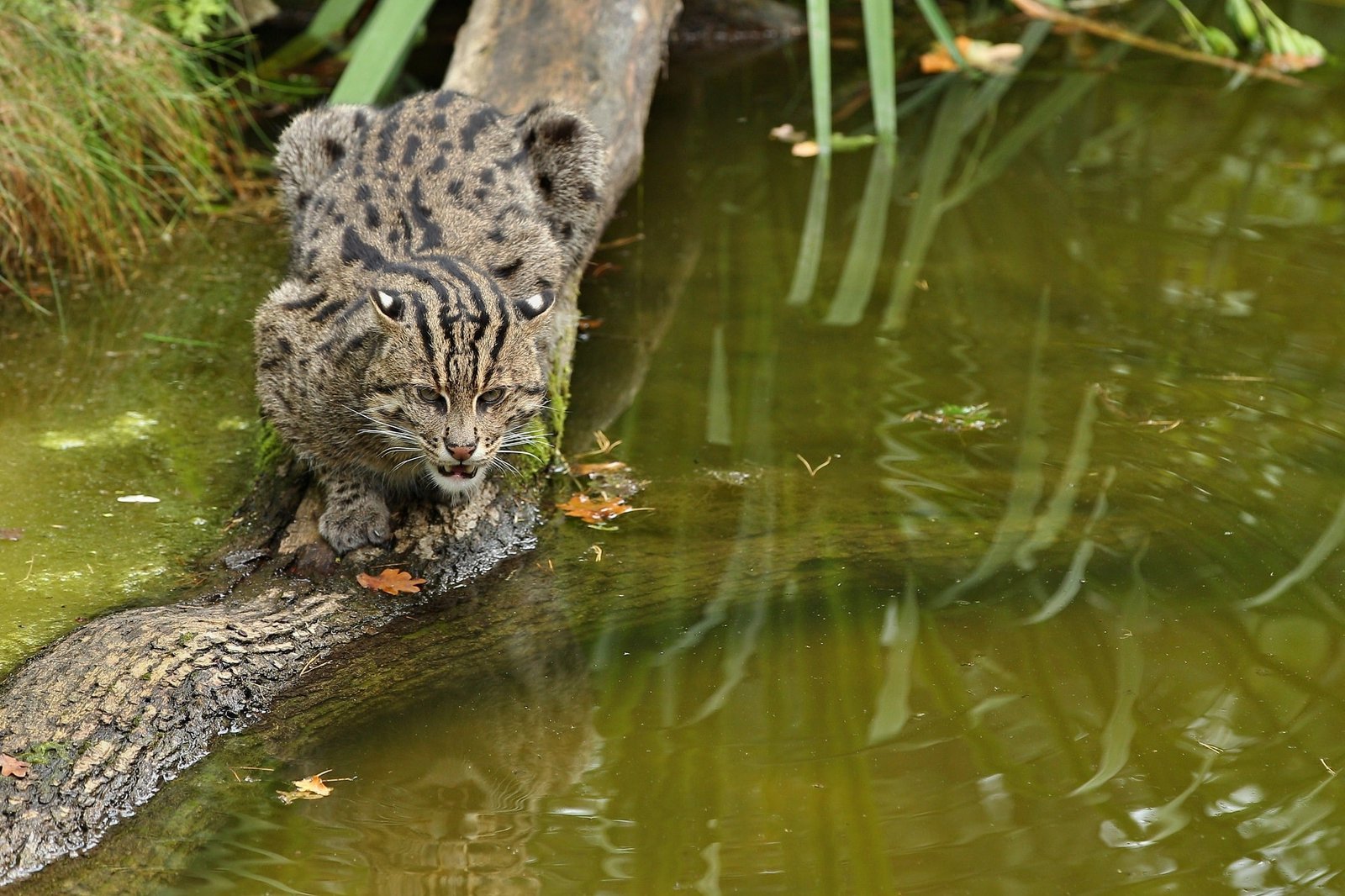
The Fishing Cat (Prionailurus viverrinus): Ecology, Conservation, and Challenges
Introduction:
The Fishing Cat (Prionailurus viverrinus) is a unique and elusive felid species found in the wetland habitats of South and Southeast Asia. Known for its semi-aquatic lifestyle and exceptional fishing abilities, this species has captured the attention of researchers, conservationists, and wildlife enthusiasts.
Distribution and Habitat:
Fishing Cats primarily inhabit the wetlands, including mangroves, swamps, and marshes, across a range of countries such as India, Bangladesh, Sri Lanka, Nepal, Myanmar, Thailand, and Cambodia. These habitats are crucial for their survival as they provide abundant prey, including fish, amphibians, and crustaceans.
Physical Characteristics:
Fishing Cats are medium-sized fefids with a distinctive appearance. They have a robust build, short legs, and a short tail. Their fur is olive-gray with dark spots and stripes, providing effective camouflage in their wetland environments.
Behavior and Ecology:
a. Semi-Aquatic Lifestyle: Fishing Cats are well-adapted to an aquatic environment. They swim proficiently and have partially webbed toes, making them adept hunters of fish and other aquatic prey.
b. Nocturnal Behavior: Primarily nocturnal, Fishing Cats are active during the night, utilizing their keen senses to navigate and locate prey.
c. Territoriality: Fishing Cats are known to establish territories, and their ranges often overlap with those of other individuals. They communicate using vocalizations and scent marking.

1. The fishing cat (Prionailurus viverrinus) is a medium-sized wild cat species found in the wetlands of South and Southeast Asia.
2. Well adapted for an aquatic lifestyle, fishing cats have partially webbed feet and are excellent swimmers, often seen hunting in water for fish and other aquatic prey.
3. These cats have a distinctive appearance, featuring a short, coarse coat with a pattern of dark spots and stripes, resembling a tabby cat with a robust build.
4. Fishing cats are primarily nocturnal and crepuscular, meaning they are most active during the night and dawn or dusk, making them elusive and challenging to observe in the wild.
5. Unfortunately, the fishing cat population faces threats from habitat loss, water pollution, and human-wildlife conflict, leading to conservation concerns and efforts to protect this unique species.

